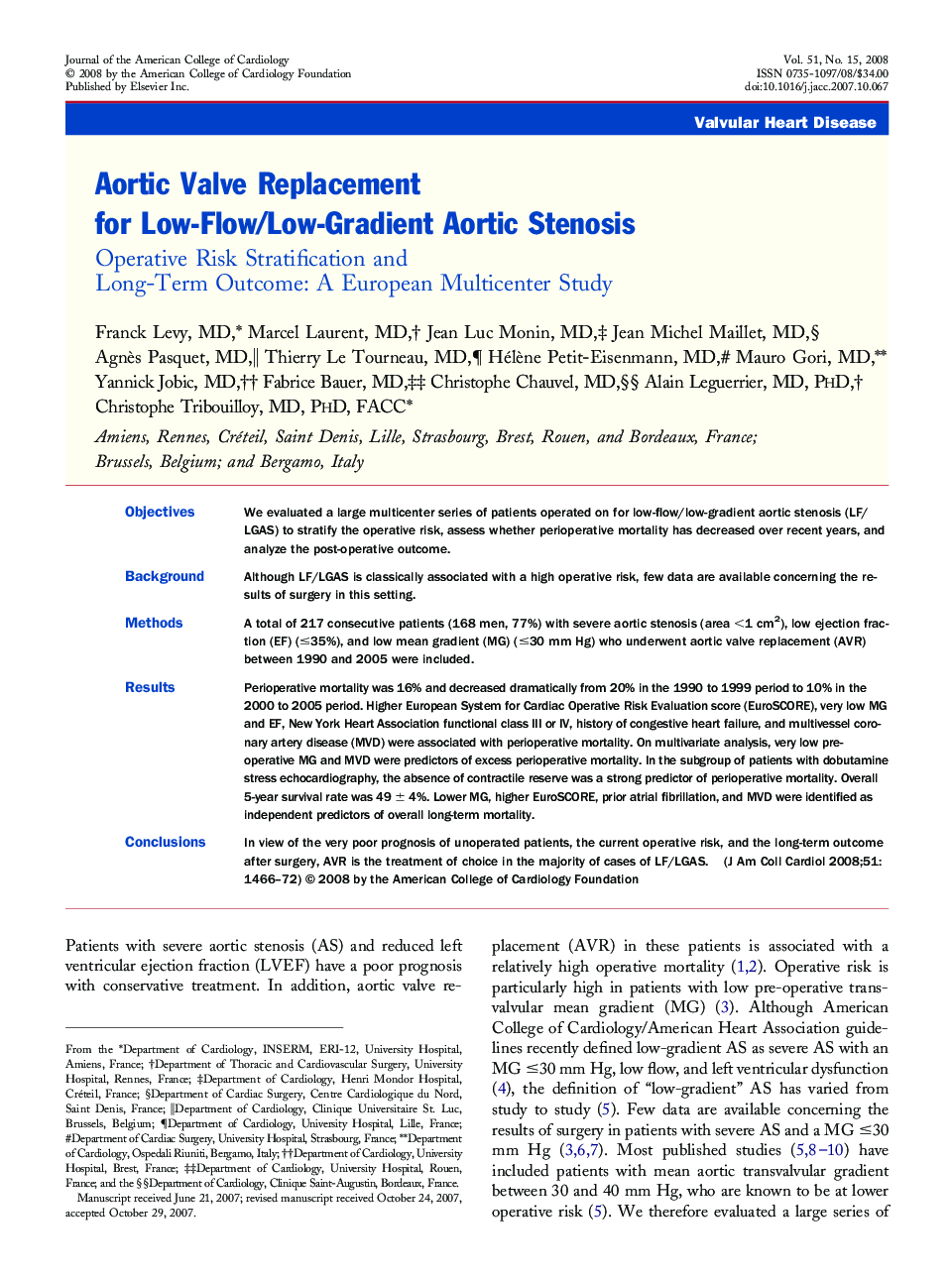| Article ID | Journal | Published Year | Pages | File Type |
|---|---|---|---|---|
| 2950440 | Journal of the American College of Cardiology | 2008 | 7 Pages |
ObjectivesWe evaluated a large multicenter series of patients operated on for low-flow/low-gradient aortic stenosis (LF/LGAS) to stratify the operative risk, assess whether perioperative mortality has decreased over recent years, and analyze the post-operative outcome.BackgroundAlthough LF/LGAS is classically associated with a high operative risk, few data are available concerning the results of surgery in this setting.MethodsA total of 217 consecutive patients (168 men, 77%) with severe aortic stenosis (area <1 cm2), low ejection fraction (EF) (≤35%), and low mean gradient (MG) (≤30 mm Hg) who underwent aortic valve replacement (AVR) between 1990 and 2005 were included.ResultsPerioperative mortality was 16% and decreased dramatically from 20% in the 1990 to 1999 period to 10% in the 2000 to 2005 period. Higher European System for Cardiac Operative Risk Evaluation score (EuroSCORE), very low MG and EF, New York Heart Association functional class III or IV, history of congestive heart failure, and multivessel coronary artery disease (MVD) were associated with perioperative mortality. On multivariate analysis, very low pre-operative MG and MVD were predictors of excess perioperative mortality. In the subgroup of patients with dobutamine stress echocardiography, the absence of contractile reserve was a strong predictor of perioperative mortality. Overall 5-year survival rate was 49 ± 4%. Lower MG, higher EuroSCORE, prior atrial fibrillation, and MVD were identified as independent predictors of overall long-term mortality.ConclusionsIn view of the very poor prognosis of unoperated patients, the current operative risk, and the long-term outcome after surgery, AVR is the treatment of choice in the majority of cases of LF/LGAS.
